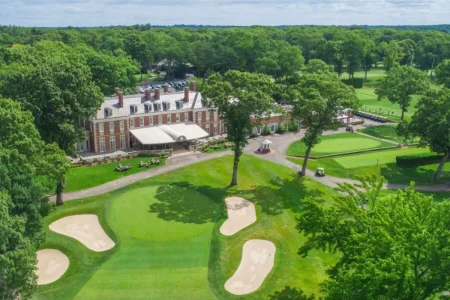When Your Dream Home Has Unexpected Roommates: Stories of Eerie Discoveries
In the excitement of buying a new home, most people focus on the practical considerations—square footage, school districts, commute times, and whether the kitchen needs updating. What rarely crosses a buyer’s mind is the possibility that their charming new property might come with some unexpected spectral residents or mysterious hidden spaces. Yet for several recent homeowners, the thrill of moving into their dream homes quickly gave way to spine-tingling discoveries that made them question what exactly they had signed up for.
One millennial couple, Courtney and Matt, experienced this unsettling reality firsthand after purchasing a historic 132-year-old house. Their ordinary moving process took a decidedly extraordinary turn when they discovered a letter hidden within the home, addressed simply to “purchaser.” The message began with an introduction from “the last surviving member of the Madison family who once owned the house,” and continued with an offer to share “the secret rooms and a few things you may not have been told when you bought the house.” Rather than being terrified, the couple’s curiosity was piqued, and they found themselves embarking on an unexpected scavenger hunt throughout their new residence. Their TikTok documentation revealed discoveries including a hidden liquor cabinet concealed behind a mirrored panel above the front parlor’s fireplace, and a secret cramped attic-like space accessed through their bathroom. While certainly eerie, these hidden architectural features offered a tangible connection to the home’s rich history and the generations who had lived there before—turning what could have been a frightening experience into an adventure of historical exploration.
The phenomenon of uncovering mysterious elements in older homes isn’t isolated to Courtney and Matt’s experience. Another homeowner made a discovery that feels straight out of a horror film’s opening sequence. While inspecting her 250-year-old home, she noticed something unusual—a floorboard that wasn’t properly secured. Natural curiosity led her to lift it, revealing an ornate book hidden beneath the floor. Upon opening the book, she was greeted not with text, but with something far more unsettling: photographs of empty rooms within the very house where she now lived. The images, devoid of people yet capturing spaces she recognized as her own home, created an immediate sense of unease—as if someone had been documenting the house while no one was present. This discovery transformed familiar surroundings into something uncanny and mysterious, leaving the homeowner to wonder about the book’s creator and their purpose in hiding such a peculiar document.
The earth itself sometimes holds secrets for new homeowners, as one couple discovered when exploring the yard of their recently purchased property. Their home inspection had failed to mention one significant feature: an underground bomb shelter lurking beneath their lawn. Kyle, the 34-year-old homeowner who shared his experience on Reddit and later with Newsweek, recalled the mixed emotions of finding such a structure. “The house was in great shape. It was the best I had seen that whole weekend, but there was just one catch: It had a creepy bomb shelter,” he explained. The underground room, a relic from Cold War anxieties, initially prompted more fear than curiosity. “I didn’t go down that day, as you can imagine,” he admitted in his post. “We were afraid to go down.” The presence of such a space—designed specifically for surviving catastrophic events—serves as a tangible reminder of past fears that once drove homeowners to construct these elaborate safety measures beneath their ordinary-looking properties.
What makes these discoveries particularly affecting is how they transform the concept of “home” from a place of comfort and security into something more complex and layered. A home is supposed to be the space we know most intimately, where we feel safest and most in control. Finding hidden rooms, mysterious artifacts, or underground structures disrupts this sense of familiarity and ownership. Suddenly, homeowners are forced to confront the reality that their private spaces have histories independent of them—histories that sometimes manifest in concrete, unsettling ways. The walls that now belong to them once witnessed other lives, other secrets, and perhaps other tragedies or celebrations. This realization can be both humbling and disquieting, as new owners recognize they are merely the latest chapter in their home’s ongoing story.
Despite the initial fear these discoveries often generate, many homeowners ultimately embrace the mysterious aspects of their properties. The hidden elements become conversation pieces, historical treasures, or even sources of pride. Some, like Courtney and Matt, turn their home’s secrets into content that fascinates others, while simultaneously processing their own reactions to these findings. Others may research the history of their homes more deeply, seeking connections to the people who left these traces behind. In doing so, they transform potential horror movie scenarios into meaningful engagements with history and architecture. These homeowners remind us that the line between creepy and captivating is often thin—and that sometimes, the most memorable homes are those that keep us guessing about what might be hidden behind the next wall, under the next floorboard, or beneath the seemingly ordinary garden. As we continue to inhabit spaces with histories that predate us, perhaps we should all be prepared for the possibility that our homes might have more stories to tell than we initially bargained for—some written in architecture, others in hidden letters, and still others in the very soil beneath our feet.















